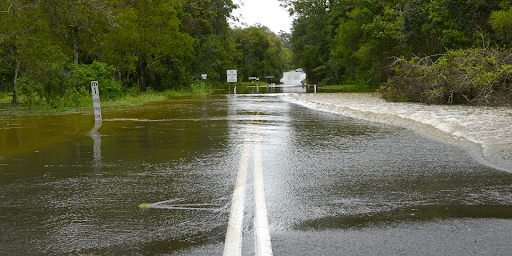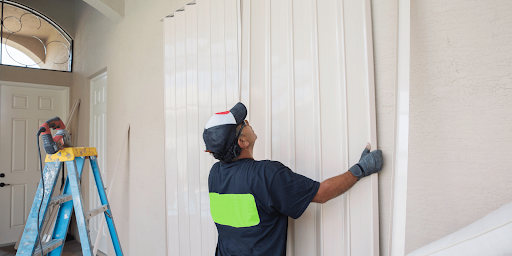There are few forces of nature as powerful and destructive as hurricanes. These tropical storms combine the high winds of tornados, the eroding water of floods, and the devastating concussive impact of landslides. If you live near the Gulf Coast region, staring down a hurricane can be overwhelming. While building codes help ensure homes are designed to withstand this act of God, there is still a checklist you must go through to prepare your home for a coming storm.
One home structure often overlooked while preparing for a hurricane is its foundation. While trying to gather all your worldly possessions, board up windows, and double-check your homeowner’s insurance, it can be easy to forget about the concrete slab beneath your feet. Unfortunately, while foundations are some of the most stable and secure portions of homes, few are completely hurricane-proof. This article will cover how hurricanes can impact a foundation, how different foundations react to hurricanes, and the best steps you can take to mitigate hurricane damage.
Can Hurricanes Damage a Foundation?
Hurricanes throw some of the most damaging natural elements at a home. If your home survives the initial storm surge, you’ll have to worry about the damage caused to the remaining structure.
High winds and debris can knock out windows and blow off shingles, while the flood of contaminated water can lead to serious mold damage.

When looking at photos of homes impacted by hurricanes, you’ll see the foundation is often the only part intact but looks can be deceiving. Just because hurricanes can’t blow away foundations doesn’t mean they’re immune to damage.
Water damage from hurricanes impacts more homes than any other element. Once the hurricane makes landfall, it can cause sea levels to rise by up to 20 feet. Even homes miles inland can be affected by intense winds and rain. Your property’s soil will absorb these large amounts of water, swelling and expanding. This expansion creates a force called hydrostatic pressure, which pushes on the walls of a foundation. Over time, this pressure can cause the walls of a foundation to bow inward, crack, and lose structural integrity.
All foundations are designed to resist some hydrostatic pressure. But the amount of hydrostatic pressure created by a hurricane is beyond standard design considerations. As a result, your home’s foundation is at a much greater risk of cracking from these water levels. To make matters worse, most homeowners and flood insurance policies don’t cover this type of foundation damage. Under most policies, damage from hydrostatic pressure is technically considered a fault of shifting earth, referred to as “earth movement” in policies. Unfortunately, most flood or homeowners insurance won’t cover damage due to earth movement.
It might come as a surprise, but hurricane winds can cause a large amount of damage to foundations, albeit indirectly. Wind impacts parts that, once no longer function, negatively affect a foundation. For example, wind can dislodge and destroy gutter systems, leading to water soaking the soil around a foundation. The wind may also destroy turf and displace topsoil, resulting in moved earth and changes to hydrostatic pressure, causing foundational shifts. High winds can destroy utility lines, create debris that clogs drainage systems, as well as many other problems. During hurricanes, keep an eye on home systems that filter and displace water flow that may be affected by high winds. If these systems fail, foundation damage will soon follow.
The final type of damage hurricanes can throw at your foundation is weight. One cubic foot of water at 70°F weighs around 62 pounds. The average living room is about 16 feet wide by 20 feet long. Assuming there is only 2 feet of water, that would mean there are over 640 cubic feet or over 39,000 pounds in just the living room. This calculation doesn’t include the water absorbed into walls, carpets, and support beams, meaning that even more weight is put onto a foundation. A foundation is designed to bear the weight of a home, but combine that with the weight of a flood, and it can bow, crack, and break under the pressure.
How Do Different Foundations React to Hurricanes?
If you’ve lived on the coast, you’ve likely seen houses build upon vertical, stilt-like foundations. These are called pier and beam foundations, one of the more hurricane and flood-resistant options out there. Unfortunately, not all foundations fare as well as piers and beams in hurricanes. For homes with basements and crawl spaces, you can face an even harder battle keeping the foundation intact, as the water will quickly pool, seep in, and wreak havoc.

Here are the most common foundations and how each holds up against torrential wind and water.
Cement and concrete foundations are the norms for most homes in America, with 65% of new single-family homes using concrete foundations in 2020. These foundations hold up extremely well to most soil types, are resistant to high winds, and can manage increased weight. However, where these foundations fail is water. Concrete is an extremely heavy building material and is prone to shifting when the soil around it becomes weakened or displaced. As a result, high amounts of water can cause these foundations to shift and crack. Furthermore, hydrostatic pressure from soil expansion can lead to major faults.
There are a few reasons why states like Louisiana, Florida, Mississippi, and North Carolina don’t have many homes with basements. But the biggest reason is that basements are extremely vulnerable to floods. In the case of floods and heavy rains, basements allow water to pool and sit inside a foundation’s walls. Internal pooling water can lead to serious problems like cracks, bowing, mold growth, and electrical failures. Even worse, since there is empty space inside the foundation, the walls are more prone to collapse and cracking from outside pressure.
Pier and beam foundations provide a good defense against the rising flood water of hurricanes. Since these homes sit higher off the ground and allow water to pass underneath, a home should be well protected from flooding. However, these kinds of foundations can still be damaged by hurricanes in other ways. For example, while the home won’t flood, the crawl space beneath can become waterlogged, leading to an increased chance of mold, rot, and pest infestations.
Of all the foundations on this list, those that use crawl spaces are the most at risk of flood damage from hurricanes. Crawl space foundations elevate the home 2 feet off the ground, which is not enough to mitigate flooding. Furthermore, since these homes are typically elevated with wooden supports, crawl spaces are prone to mold, wood rot, funguses, and pests when waterlogged. In some cases, if the wood beneath the crawl space is already weak and decayed, extreme winds can shift the home on the foundation, leading to a complete collapse.
Can You Prevent Hurricane Foundation Damage?
Unfortunately, the most homeowners can do regarding hurricane mitigation is to ensure that home structures are properly prepared.
When it comes to hurricane preparedness, the Federal Emergency Management Agency (FEMA) recommends you:

- Replace gravel and landscaping stones with lighter-weight, fire-resistant materials.
- Cut weak, low-hanging branches from trees.
- Install storm shutters.
- Hurricane-proof exterior facing doors with a third hinge and dead bolt.
- Use tempered glass for sliding glass doors.
- Replace old garage doors and tracks.
- Seal outside wall openings, such as:
- Vents
- Outdoor electrical outlets
- Garden hose bibs
- Opening for cables and utility lines
Closing Thoughts
As climate change continues to alter hurricane season, more homes may face these catastrophic natural disasters. These homes will have to survive the initial surge, the following flood water, high winds, and post-hurricane problems like mold, rot, and water damage.
Ultimately, your best bet is to get a comprehensive home and foundation inspection as soon as the hurricane passes. This way, you can accurately assess the amount of property damage you sustained. While rebuilding, we recommend keeping an eye out for the major signs of foundation damage.
Finally, it’s a good idea to immediately consult your home insurance policy and contact the appropriate hurricane response organizations like disaster relief agencies, public health officials, first responders, and local nonprofits. Hurricane repair can be extraordinarily expensive, and any financial relief can make the difference between a fully rebuilt home and more issues down the road.












